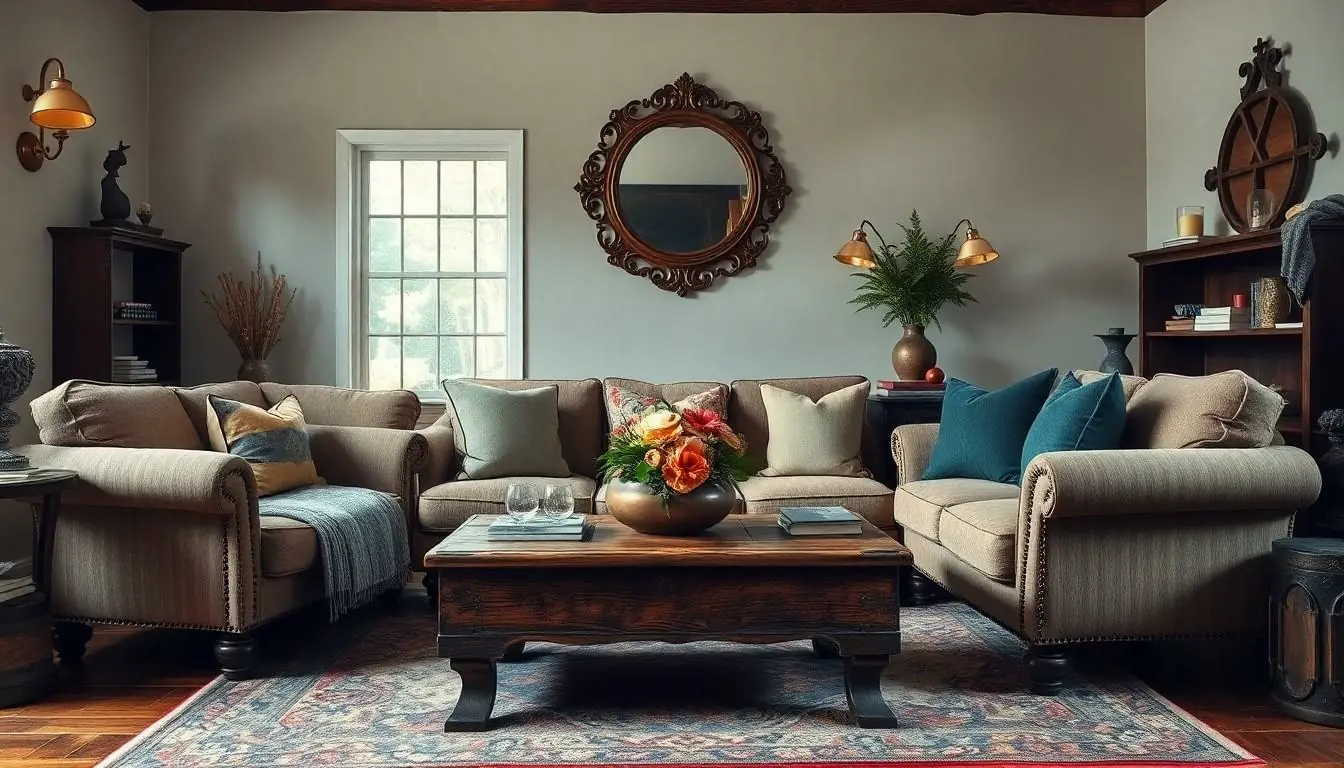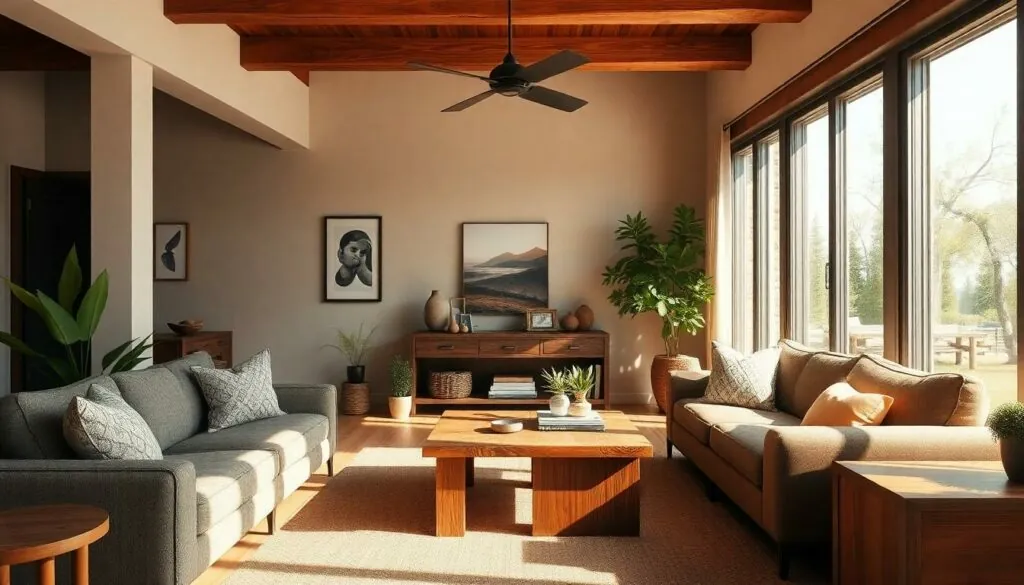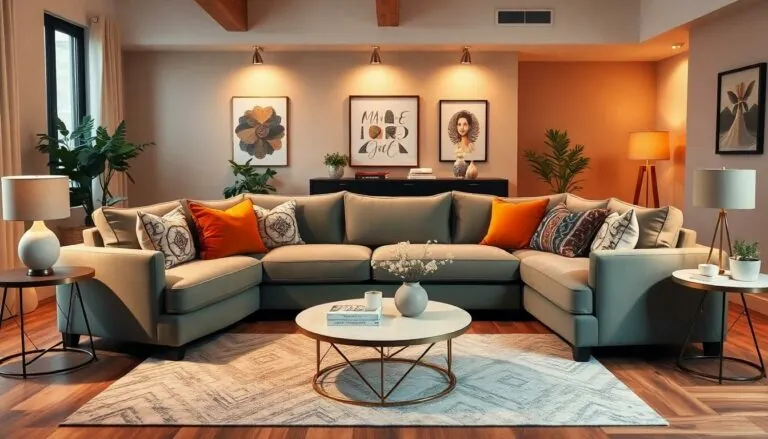Table of Contents
ToggleWhen it comes to home styles furniture, the choices can feel as endless as the number of throw pillows on your couch. From sleek modern designs that scream sophistication to cozy rustic pieces that practically invite you to curl up with a good book, the right furniture can transform a house into a home. It’s like dressing your space in a stylish outfit—one that reflects personality and taste.
Imagine walking into a room where every piece tells a story, where comfort meets creativity. Whether you’re channeling your inner minimalist or embracing bohemian vibes, the furniture you choose sets the tone for your entire space. So why settle for bland when you can have vibrant? Let’s dive into the world of home styles furniture and discover how to make your living space not just a place to live, but a true reflection of who you are.
Overview of Home Styles Furniture
Home styles furniture encompasses a wide array of designs and aesthetics tailored to enhance living spaces. Various styles such as modern, traditional, rustic, and contemporary offer unique characteristics, enabling individuals to express their preferences through décor. Modern designs often feature clean lines and minimalistic elements, creating a sense of spaciousness. In contrast, traditional furniture showcases classic details and rich finishes, evoking a warm, inviting atmosphere.
Adopting rustic pieces introduces elements of nature into a home, emphasizing earthy tones and textures. This style often prioritizes craftsmanship, highlighting natural wood grains and handcrafted details. Consequently, many individuals find themselves drawn to the uniqueness of each rustic item. Conversely, contemporary furniture blends current trends with functionality, offering sleek silhouettes and versatile materials.
Different materials also play a critical role in defining home styles furniture. Wood, metal, and fabric provide various textures and appearances, which contribute to the overall ambiance of a room. Choosing the right material depends largely on the desired look and feel. Colors further enhance these styles, with neutral palettes offering a sophisticated touch while vibrant hues create focal points within spaces.
In selecting furniture, balance remains essential. Mixing different styles can lead to a harmonious design as long as complementary elements are considered. Incorporating personal touches, such as artwork or decorative accessories, further personalizes the space. Ultimately, home styles furniture serves not only as functional objects but also as reflections of individual personality and lifestyle choices, crafting environments that feel uniquely theirs.
Popular Home Styles

Various home styles reflect personal preferences and create inviting atmospheres. Each style offers unique elements that enhance the overall aesthetic.
Traditional Home Styles
Traditional home styles emphasize timeless elegance. Rich wood finishes, intricate moldings, and ornate details characterize this design. Plush upholstery in deep colors provides comfort while maintaining sophistication. Accessories like antique mirrors and brass fixtures add to the nostalgic ambiance. Classic furniture pieces, such as wingback chairs and round dining tables, create a warm and welcoming environment.
Contemporary Home Styles
Contemporary home styles embrace modern trends while prioritizing functionality. Sleek lines, open spaces, and minimalist designs dominate this category. Neutral color palettes make rooms feel airy and bright. Furniture often features innovative materials, such as glass and metal, offering a fresh take on design. Decorative accents include bold artwork and sculptural pieces that serve as conversation starters.
Rustic Home Styles
Rustic home styles draw inspiration from nature and the outdoors. Exposed beams, reclaimed wood, and handmade furnishings contribute to a cozy feel. Earthy tones and natural textures create warmth and invite relaxation. Items like distressed tables and wicker baskets enhance the organic look. Cozy textiles, such as wool blankets and linen cushions, complete the inviting atmosphere, encouraging a connection with nature.
Key Features of Home Styles Furniture
Home styles furniture showcases unique characteristics that enhance spaces while reflecting personal taste. Key features involve material choices and design elements that create inviting environments.
Material Choices
Wood remains a popular choice, offering durability and traditional appeal. Metal frequently adds a modern touch, enhancing industrial aesthetics. Upholstery fabric varies, with options like cotton, linen, and leather providing versatility. Natural materials like rattan and bamboo foster a casual, relaxed vibe. Eco-friendly choices emerge, with reclaimed wood gaining traction for sustainability and character. Each selection influences both style and comfort, ensuring furniture meets functional needs.
Design Elements
Clean lines and minimalist forms define modern styles, promoting uncluttered environments. Ornate motifs and rich finishes characterize traditional designs, cultivating warmth and elegance. Rustic furniture showcases natural textures and earthy tones, inviting harmony with the outdoors. Contemporary styles blend current trends with practicality, creating balanced, innovative spaces. Functionality often remains a priority, ensuring each piece serves a purpose while enhancing aesthetic appeal. Personal touches in design contribute to a distinct and cohesive look.
How to Choose the Right Home Styles Furniture
Selecting the right furniture for a home style requires careful consideration of several factors. Start by defining individual tastes and preferences in furniture styles. Consider elements like color, texture, and shape that resonate with personal aesthetic.
Evaluate the function of each space. Living rooms might benefit from comfortable seating options, while dining areas require larger tables and more elegant chairs. Prioritizing functionality helps ensure that furniture meets daily needs while also fitting seamlessly into designed spaces.
Analyze the scale of furniture in relation to room dimensions. Oversized pieces can overwhelm smaller areas, while tiny furniture might look lost in expansive environments. Creating balance is essential for visual harmony.
Additionally, explore materials that suit lifestyle requirements. Families with children may prefer durable upholstery, while eco-conscious individuals might lean toward sustainable wood options. Choosing the right materials can enhance both aesthetics and practicality.
Consider mixing and matching styles to create an eclectic look. Blending modern and rustic elements can bring character to a space. This approach allows for a unique atmosphere that reflects personal taste, encouraging creativity in design.
Involve key design elements that align with the chosen home style. Simple, clean lines may work for modern aesthetics, while traditional spaces might thrive on ornate details. Integrating these features enhances the overall flow and ambiance of the home.
Ultimately, choosing home styles furniture necessitates thoughtful consideration of various components. Prioritizing individual preferences, functionality, and design coherence ensures a living space that feels welcoming and genuinely reflects who they are.
Caring for Your Home Styles Furniture
Caring for home styles furniture enhances the longevity and appearance of pieces. Regular dusting with a soft cloth prevents dust accumulation and keeps surfaces clean. Occasionally, using a mild soap solution on a damp cloth helps maintain finishes without causing damage.
Inspecting furniture for signs of wear is crucial. Address scratches or dents with appropriate touch-up kits to preserve the original look. Applying furniture polish every few months protects wood surfaces and adds a beautiful shine.
Storing items properly prevents damage. Avoid placing furniture in direct sunlight, which can fade colors. Use coasters under drinks to prevent moisture rings on surfaces.
Maintaining upholstery requires specific attention. Vacuuming cushions regularly prevents dirt buildup and keeps fabrics fresh. Spot cleaning spills immediately is vital to prevent stains from setting.
Temperature control aids in preserving furniture quality. Keeping indoor humidity levels between 30% and 50% prevents wood from cracking or warping. Likewise, adjusting room temperature can keep upholstery materials from becoming brittle.
Taking these steps results in durable and beautiful home styles furniture. Prioritizing care leads to lasting enjoyment and showcases personal style.
Choosing the right home styles furniture is essential for creating a space that feels uniquely personal. By understanding different styles and their characteristics, individuals can select pieces that resonate with their tastes and enhance their living environment. Embracing creativity and comfort in furniture choices not only reflects personal identity but also fosters a warm and inviting atmosphere.
Caring for these pieces ensures they remain beautiful and functional for years to come. With thoughtful consideration of materials, design elements, and maintenance practices, anyone can curate a home that truly embodies their lifestyle and preferences. Ultimately, home styles furniture is more than just decor; it’s a vital part of crafting a space that feels like home.







